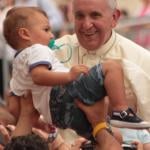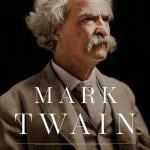TODAY IN GOD:
RELIGION NEWS BITES FOR YOUR SNACKING PLEASURE
____________________________________________________________________________________
UK government ministers bow to hybrid pressure
Ministers have bowed to pressure to allow the creation of human animal hybrid embryos for research.
When the ban was proposed last year there were fears among scientists it would hamper medical breakthroughs.
Hybrid embryos will only be allowed for research into serious disease and scientists will require a licence.
Scientists welcomed the proposals put forward in the draft fertility bill, but opponents questioned the ethics of using human cells in this way.
Public Health Minister Caroline Flint denied that the government had staged a climbdown, saying they had always wanted to “leave the door open” for this type of research to be allowed on a case-by-case basis.
She said scientists had put forward more evidence about the importance of using hybrid embryos.
“We saw this was an area where these could be used for scientific benefit.”
The draft bill allows the creation of human embryos that have been physically mixed with one or more animal cells. However, true animal-animal hybrids, made by the fusion of sperm and eggs, remain outlawed.
FOR THE FULL STORY (BBC) CLICK HERE
Why the pool of Arabic speakers is still a puddle
Alex Marin studied Arabic for three years, one of them in Egypt. But that still doesn’t make her a “serious” Arabic student.
After learning enough to conduct basic conversations, Ms. Marin is going to law school. Resuming Arabic afterward “might be a pipe dream,” she says. For her, it’s sad but true that getting a law degree is quicker and more secure than getting one in Arabic.
The US has sought to cultivate high-level Arabic speakers since 9/11, when the country’s lack of them became a national-security concern.
Arabic courses swelled in number soon after the attack. But six years later, the post-9/11 spike in interest seems to be fading. And it’s unclear how many of today’s Arabic students will stick around for the five to 10 years it takes to become the advanced speakers the government requires. Learning it is time-consuming, and the dropout rate is high. The resources to teach it are sparse, and a perplexing policy sometimes discourages students from studying Arabic abroad.
“The demand is definitely there, and it will continue, [but] it has leveled off,” says Mahmoud Al-Batal, an Arabic professor at the University of Texas at Austin.
Arabic isn’t losing students, but it’s not gaining them as rapidly as it has in the recent past, say professors and analysts in the field. Comprehensive data on Arabic-language enrollment, compiled by the Modern Language Association (MLA), won’t be available until the fall.
But even with more students entering the language – joining more than 10,000 others, as of 2002 – the vast majority will drop out long before they reach an advanced level.
“First-year enrollments across the nation are enormous. The second-year enrollments are reasonably large. But once you move beyond that, it tapers off very, very rapidly,” says Kirk Belnap, director of the National Middle East Language Resource Center (NMELRC) in Provo, Utah.
“There are ‘Sputnik students,’ of course,” says Professor Batal, referring to the similar spike in students learning Russian after the Soviet Union launched its intimidating satellite in 1957. “I do expect the interest to go down a little bit.”
FOR THE FULL STORY (CHRISTIAN SCIENCE MONITOR) CLICK HERE
Christians Plan for Beijing Olympics
They worked the crowds at Olympic games in Athens, Sydney and Atlanta. And, even though China outlaws what they do, they will be on the ground next summer in Beijing as well.
Christian mission groups from around the world plan to quietly defy the Chinese ban on foreign missionaries and send thousands of volunteer evangelists to the 2008 Beijing Olympics.
Many mission workers are traveling through China now as tourists to learn their way around and conduct prayerwalks meant to spiritually prepare the region for the Gospel. Next summer, just before the games begin, several Christian groups plan to rally in an Asian nation that they will not name, then head out in small teams to Olympic sites and beyond.
“They are going to have many thousands of people planning to travel around in different parts of China,” said the Rev. Johnny Li, minister-at-large for Open Doors, an advocacy group for Christians worldwide who are persecuted because of their faith.
In anticipation of a crush of volunteers, Li said a Thailand missions group has produced a DVD encouraging collaboration among all the Christian outreach efforts expected at the games.
Christians regularly evangelize at major sporting events, but the Beijing Olympics offer an opening like no other, in a communist country that conservative Christians have long reviled.
FOR THE FULL STORY (THE AP’S RACHEL ZOLL VIA WASHINGTONPOST.COM) CLICK HERE
Russian Church to End Schism
MOSCOW — Russian Orthodox leaders will move to end nine decades of bitter division Thursday with a pact reuniting the main church in Russia with a breakaway church that split off as Communist rule took hold after the Bolshevik Revolution.
Patriarch Alexy II, who heads the largest flock in the Orthodox Christian world, is to sign the Canonical Communion Act with Metropolitan Laurus, the leader of the Russian Orthodox Church Outside of Russia.
The ceremony is to take place at Moscow’s Christ the Savior Cathedral — a symbol of the revival of Russia’s dominant church since the 1991 collapse of the officially atheist Soviet Union. The golden-domed church is a replica of the cathedral blown up in 1931 on the orders of Soviet dictator Josef Stalin.
“I think we stand today on the threshold of a historic event that will liquidate the tragic consequences of the civil war, which divided our people and divided our church,” Alexy said Wednesday at a session of the Moscow Patriarchate leadership, the RIA-Novosti news agency reported.
The church abroad split from the Moscow Patriarchate three years after the 1917 revolution and cut all ties in 1927, after the leader of the Russian Orthodox Church, Patriarch Sergiy, declared the church’s loyalty to the Communist government.
The Russian Orthodox Church had said that Sergiy’s move was aimed at saving the church, but the breakaway group found it unpalatable. The Moscow Patriarchate disavowed the declaration last year, setting the stage for the reconciliation.
Laurus has emphasized that the reunion is not a merger, and his branch will maintain administrative control over its 400-plus parishes worldwide.
The New York-based church reports 480,000 U.S. members, while the Moscow Patriarchate says about two-thirds of Russia’s 142 million people are Russian Orthodox and that it has millions of followers in other ex-Soviet republics.
FOR THE FULL STORY (AP VIA WASHINGTON POST) CLICK HERE
University shut down in Holocaust row
ROME — An Italian university closed one of its campuses for the day Friday to prevent a planned lecture by a retired French professor who denies gas chambers were used in Nazi concentration camps.
Robert Faurisson, who has been convicted five times in France for denying crimes against humanity, is expected to speak at a local hotel instead.
The University of Teramo cited security fears in announcing the closure of its law, political sciences and communications departments. “(There is) a climate of tension which could put in danger the safety of the students,” the university said in a statement.
The Nazi-hunting Simon Wiesenthal Center had urged the university to cancel the event.
“To welcome Faurisson is an embarrassment to Italian academia, offends the families of Italian martyrs who fell in fighting the scourge of fascism … and encourages a perverse propaganda to incite a new generation to anti-Semitism and racist doctrine,” the center said in a statement.
FOR THE FULL STORY (AP via BBC NEWS) CLICK HERE
Cultures clash in US mosques
Like any good Muslim, Ali Karjoo-Ravary went to mosque on Friday seeking spiritual inspiration. What the 19-year-old Iranian-American found, however, was something completely different.
At the head of a mosque in upstate New York, a foreign imam was leading the Friday service. Sitting on the floor with the other congregants, Mr. Karjoo-Ravary strained to understand the religious leader’s thick accent. Even as he made out the imam’s words, the message made little sense. “The entire sermon was about ‘Don’t let a girl pat your back. It can lead to things,’ ” Karjoo-Ravary recounts.
The imam’s disconnect with American culture shocked Karjoo-Ravary. Trying to gauge the reaction of other young congregants, he spotted a cluster of teenagers and 20-somethings toward the back of the mosque. They were hunched over and appeared to be earnestly listening to the imam’s every word. But looking closer, he realized their attentive postures were meant to conceal cellphones. The entire group had tuned out the sermon and was texting busily.
For many American-born Muslims, experiences like Karjoo-Ravary’s are not uncommon. Over the past 40 years, hundreds of thousands of Muslims from around the world have emigrated to the United States, bringing their own cultural interpretations of Islam and electing imams who support their views. This practice worked well until recently, when large numbers of these immigrants’ Westernized children reached adulthood, creating a disconnect between faith and culture. Foreign imams are at the center of this fast-growing divide between immigrant Muslims and their American-born children.
FOR THE FULL STORY (CHRISTIAN SCIENCE MONITOR) CLICK HERE
Connecting with their culture, spirit:
American Indians link traditions with studies at a Milwaukee school
MILWAUKEE — When his students are in trouble, Jarod Pidgeon can burn grasses, sage or other herbs to open a connection with the spirit world. He can pray with the children or perform a ceremony inside a sweat lodge — all at his school.
Pidgeon has options unavailable to most other teachers because he works for the Indian Community School, a private religious school near downtown Milwaukee.
Here, children not only learn about the physics of a thunderstorm, they also learn about the spiritual significance of rain, its meaning and how storms add to nature — and to their very beings.
“In our daily lives as native people, our purpose for being here, our reason for being here and what we have done through our teaching and our values comes from what we call our creator,” said Principal Alan Caldwell. “Here, students learn about that, and can take it home to their parents.”
Education that incorporates the spirituality and history of native cultures is becoming increasingly popular as educators seek to give students and their families a strong foundation for life.
There are more than 50 American Indian charter schools in the United States, according to the Center for Education Reform, a think tank in Washington. About 20 of those are on reservations. Other organizations count some 150 schools that focus on students learning about their native backgrounds.
FOR THE FULL STORY (CHICAGO TRIBUNE) CLICK HERE















